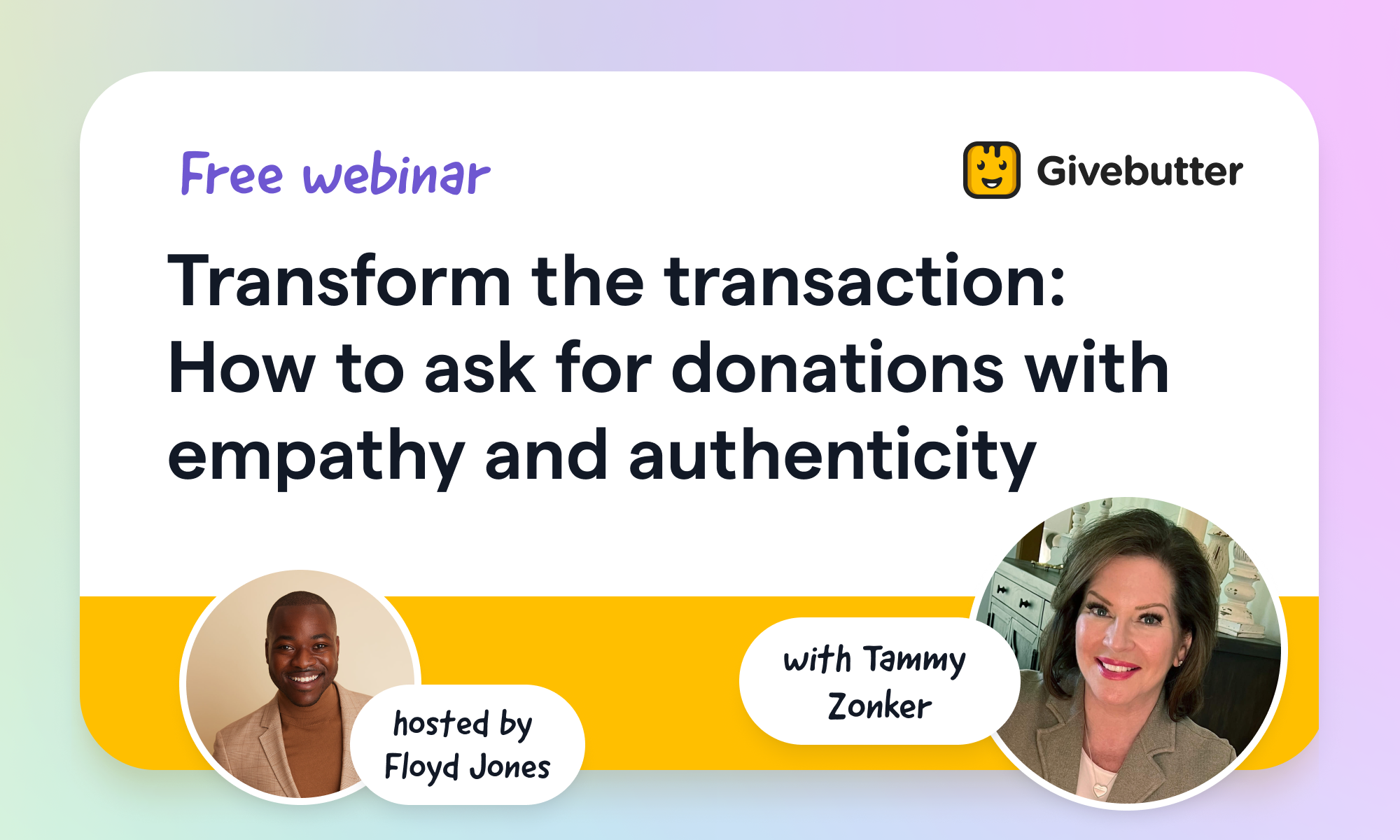Table of contents
Table of contents
Accounting for nonprofits is different than in the business world—you’re not trying to turn a profit; you’re trying to fund a mission. Hopefully, you’re succeeding in doing just that by bringing in revenue through donations and grants. But if you haven’t got the basics of nonprofit accounting down, it can lead to financial instability, penalties for non-compliance, and other damaging risks.
In this guide, we’ll discuss why effective nonprofit bookkeeping and accounting is absolutely essential and how you can put it into practice to secure financial stability and efficiency.
Importance of accounting in nonprofits
Nonprofits need to keep their accounting practices in tip-top shape just as much as for-profits do. Keep reading to learn why.
Ensure transparency 🔍
From board members and other stakeholders to tax regulators, internal and external entities of all kinds will have a vested interest in your nonprofit’s financial operations.
Good accounting practices, like financial reporting, provide the transparency everyone needs to verify your financial position and make sure that contributions and spending are geared toward your mission.
Demonstrate financial accountability 📝
Everyone who makes a contribution to your organization, however big or small, will want to trust that it’s going to the right place. Accounting for nonprofits is heavily focused on ensuring that donations are used as the giver intended them to be.
Adhere to legal and regulatory obligations 📜
Robust accounting practices keep you compliant with legal and regulatory policies. Nonprofits must abide by the accounting standards laid down by the Generally Accepted Accounting Principles (GAAP), Internal Revenue Service (IRS) tax regulations, and any other relevant international tax policies.
Allocate your resources efficiently 💸
Using accounting software, nonprofits can gain real-time insights into your cash flow, “incomings” (i.e., payments and revenue), and “outgoings” (i.e., expenses).
You can also study historical data to evaluate which activities generated revenue and which underperformed. This wealth of knowledge can better inform how you spend your money in the future.
The basics of nonprofit accounting
Now that you know why accounting for nonprofits is so important, you’ll probably want to get started right away. Here are the seven foundational money management practices you need to know.
1. Fund accounting 🤝
For nonprofit organizations, every cent given via donations, corporate grants, or governing agencies has a designated purpose. So, you need to abide by strict transparency requirements that dictate precisely how these funds are used.
For this reason, all nonprofits must legally use a specialized method of accounting: fund accounting.
🤓 Cheat sheet: Financial transactions are categorized based on purpose.
Fund accounting is a method of recording, allocating, and reporting all incomings and outgoings to provide accountability. It involves grouping your financial transactions into specific, purpose-based categories to guarantee that money is allocated appropriately.
It’s also used to prove to donors and grant authorities that their given funds are being spent in alignment with their imposed conditions.
Typically, there are three overarching groups that funds will be categorized into:
- Restricted funds: This money can only be used to finance a specific project, activity, or event.
- Temporarily restricted funds: Until a specified time period, these funds can only be used to finance the project, activity, or event that they were intended for. Any leftovers become unrestricted funds after this time period ends or once they’ve served their original purpose.
- Unrestricted funds: This money can be spent on any general purpose or need.
Let’s say you’re running a direct mail fundraising campaign to raise enough money to renovate your animal shelter. Those funds would be restricted funds because they were given to finance a specific, intended purpose.
But, if a local company were to give you money just because they want to support your cause, those funds would be unrestricted.
Due to the complexity of fund accounting, using specialized nonprofit accounting software is crucial. It can segregate your accounts and automate data entry, reducing the risk of error.
You may also need reliable HR reporting software for effective compensation management and real-time insight into your employee expenses.
2. Revenue recognition 🧐
Revenue recognition is an accounting principle that outlines how and when income should be recognized. While it’s fairly straightforward for a for-profit company, it’s one of the most challenging aspects of accounting for nonprofits.
🤓 Cheat sheet: Check the revenue recognition guidelines for contributions and grants.
The Financial Accounting Standards Board (FASB) dictates how nonprofits should identify, classify, and recognize revenue in the GAAP. Unlike for-profit companies, nonprofits have various sources of revenue—contributions, grants, membership dues, international donations, etc—all of which must be recognized differently.
For example, contributions and grants should be recognized as follows:
- Contributions: Contributions given by donors can only be recognized upon receipt if they’re unrestricted funds. Restricted contributions are recognized as revenue only once they become unrestricted (i.e. when the contributions serve their original purpose or the restrictions are waived).
- Grants: Like contributions, unrestricted grants can be recognized as revenue immediately. Restricted grants are recognized once the original conditions are met.
Other nonprofit funding sources like membership dues, program fees, and volunteer services all have different revenue recognition stipulations. So, study those FASB guidelines to make sure you’re recognizing revenue correctly!
3. Expense allocation and budgeting 📊
Setting an annual nonprofit budget to cover resources and expenses is a key accounting activity. It’s how you make sure that your nonprofit has the means to stay up and running.
But with donations being unpredictable, nonprofits can face challenges when it comes to predicting expenses and allocating resources.
🤓 Cheat sheet: Proper planning for income and expenses = financial efficiency and stability.
Budgeting for nonprofits requires in-depth analysis of historical data to make informed estimates. Your fundraising revenue and contribution volumes can give you an idea of the income you can expect, while your Statement of Functional Expenses will detail your past expenses to help you allocate funds accordingly.
Nonprofit expenses include things like:
- Salaries, benefits, and bonuses
- Office rent
- Program and office supplies
- Utilities
- Insurance
- Other program expenses (such as outreach and collections)
- Fundraising expenses (such as marketing campaigns, ads, and events)
With this information, you can estimate expenses in alignment with predicted income to make accurate budgeting decisions. This will help to secure your financial stability and efficacy and can even guide wider initiatives.
As a best practice, use expense management software to automate and streamline expense recording. Not only does it centralize your expense data into one system (i.e. no more hunting through masses of unorganized receipts!), but it allows you to submit and track business expense data in real-time, on a 24/7 basis.
4. Financial statements and transparency 👀
By keeping accurate, up-to-date financial statements, you can analyze your financial health, make strategic financial decisions, and, critically, provide stakeholders with crystal-clear transparency into your cash allocations.
🤓 Cheat sheet: Stakeholder transparency and detailed financial reporting are common practices.
External stakeholders want to know exactly how their money is being spent. They also want authentic insight into the operational performance of your organization to evaluate whether your activities align with your mission and adhere to your goals.
Detailed financial reporting hands them this information, in turn improving your relationships and increasing their willingness to support you.
The four main nonprofit accounting statements that you’ll use are:
- The Statement of Financial Position, which tracks the assets and liabilities (the nonprofit version of a for-profit income statement)
- The Statement of Activities, which details revenue and how it was spent (the nonprofit version of a for-profit balance sheet)
- The Statement of Cash Flows, which reports the flow of incomings and outgoings.
- The Statement of Functional Expenses, which details all of your organization’s expenses.
5. Tax-exempt status 🌟
If you’ve applied for tax-exempt status under Section 501, you can receive special tax exemptions. That said, you still need to comply with IRS regulations.
🤓 Cheat sheet: Regulatory compliance is required to maintain your nonprofit’s tax-exempt status
For a nonprofit to keep their tax-exempt status, they must fill out IRS Form 990 on an annual basis. Form 990 collects the revenue, expenses, and asset data detailed in your accounting statements to evaluate whether you still meet the criteria for tax exemption.
It’s worth noting that if you collect donations from overseas or partake in any programs abroad, you might be subject to different tax regulations.
6. Audit and review 🔬
Auditing is the process of inspecting and reviewing your financial statements to guarantee the accuracy and completeness of your financial records.
🤓 Cheat sheet: Financial audits or reviews ensure financial accuracy and compliance
The accuracy of your strategic decisions and financial health analysis depends on financial reports. Poor record-keeping and auditing practices can mean that errors in your accounting statements skew analysis or that non-compliant practices go undetected.
So, make sure to conduct a financial audit on an annual basis to avoid poor decision-making, non-compliance fines, and a damaged reputation.
7. Fundraising and donor management 👋
While individuals are making fewer one-off online donations, the volume of monthly online donations has risen by 11%. Managing your fundraising revenue and donor contributions can give you insight into your projected income and even drive reliable income streams.
🤓 Cheat sheet: Donation and donor monitoring are critical to smooth contribution management.
By monitoring donation volumes, you can effectively manage contributions and allocate them towards the right resources. Plus, when you know where donations are coming from, you can work on fostering relationships with the right people.
Acquiring new donors takes a lot of time and money. Effective donor management systems can turn one-time donors into engaged contributors with a greater donor lifetime value.
Do this right, and you can access reliable fundraising and revenue streams—the ultimate dream of nonprofits everywhere.
Balancing books, boosting impact
Accounting for nonprofits comes with many challenges. Staying on top of different income streams so that they can be classified and recognized appropriately isn’t easy. Financial reporting and regulatory compliance can become complicated, too.
Luckily, there are plenty of tools that you can use to streamline the process: bookkeeping software, expense management tools, online HR platforms, the list goes on. With the right tools and these seven foundations of nonprofit accounting, you’re more prepared than ever to improve your financial future.
With Givebutter’s all-in-one nonprofit fundraising platform, you can have peace of mind knowing that your transaction management tools and donor records are in one easy-to-navigate, secure place. Accept donations, sell event tickets, and import and track historical transactions on one platform—all for free.
Create your free account today and see how Givebutter can help you raise more and stress less.









%20(1).png)






.png)


.png)






.svg)
.svg)
